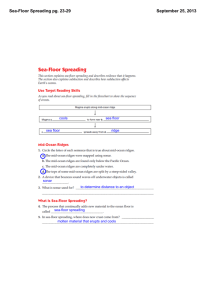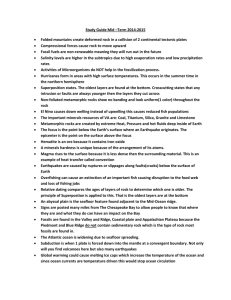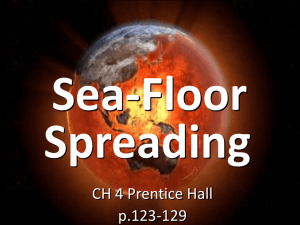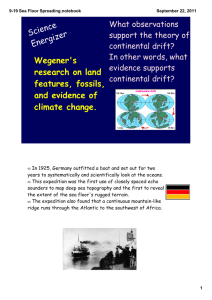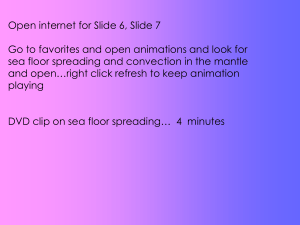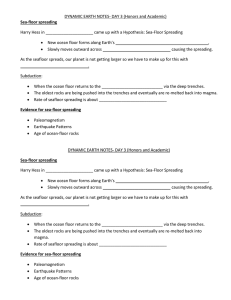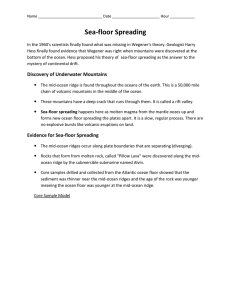Sea Floor Spreading
advertisement
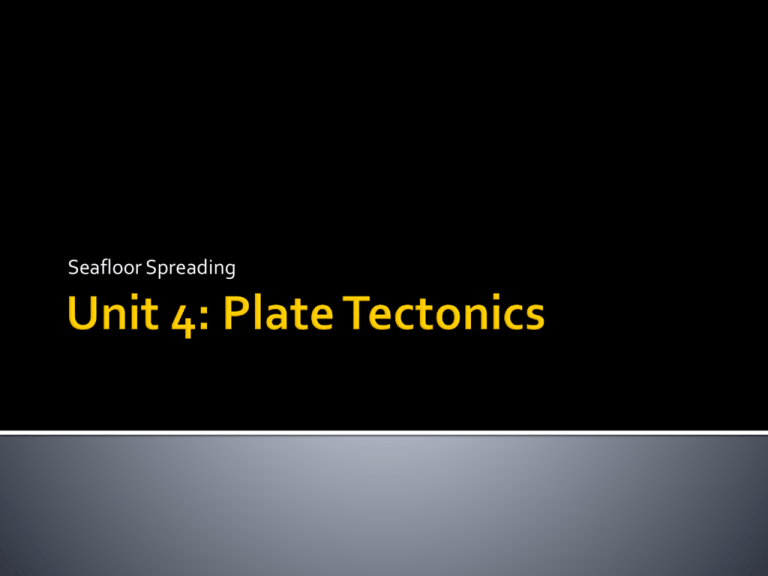
Seafloor Spreading Come in Silently, take out your weekly organizer, and work on your Do Now SILENTLY and INDEPENDENTLY: 1. List and Define the Three types of Heat Transfer 2. Describe Convection Currents 3. Describe Density What is the process of sea-floor spreading? What is the evidence for sea-floor spreading? What happens at deep-ocean trenches? http://oceantoday.noaa.gov/deepocean/ Temperatures are near freezing There is no light or living things Some areas of the deepocean floor has a lot of life The East Pacific Rise - This area is near the costs of Mexico and South America Here, ocean water sinks through the cracks and is heated by which layer? Around these areas live bizarre creatures Mid-ocean Ridge – undersea mountain chain that is part of a long system of mountains beneath the Earth’s Oceans Scientists made a map using Sonar. Sonar – device that bounces sound waves off underwater objects and records the echoes of these sound waves The ridges lie hidden under the water Some places, the ridge pokes above the surface Iceland is part of the midocean ridge How did these ridges form? One geologist proposed the idea of Sea-floor spreading The sea floor spreads apart along both sides of a midocean ridge as new crust is added. As a result, the ocean floors move like conveyor belts, carrying the continents along with them Forms along a crack in the oceanic crust Motel material rises and erupts The older rock moves outward on both sides of the ridge As the molten material cools it forms a strip of rock in the middle Several types of evidence supported the theory of sea-floor spreading: eruptions of molten material, magnetic stripes in the rock of the ocean floor, and the ages of the rocks Scientists dived to the ocean floor in a small submarine. The submarine found strange rocks shaped like pillows Other rocks looked like toothpaste These rocks form only when molten material hardens quickly under rock Earth’s magnetic poles have reversed many times in its history Scientists discovered that the rocks lie in a pattern of magnetized “stripes” The stripes show the Earth’s reversal in its magnetic field. Iron is found in the rocks and as it cooled, the iron lined up to the direction of Earth’s Magnetic poles Rock samples obtained by drilling into the ocean floor Scientists determined the age of rocks in the samples Found that the farther away from a ridge, the older the rocks were The youngest rocks were always in the center of the ridge

